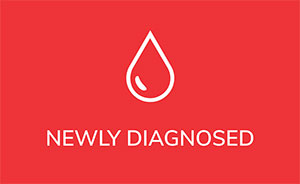Medically reviewed by Dr. Brian Koffman.
The Bottom Line:
Patients diagnosed with blood cancers are at higher risk of developing second cancers, especially second blood cancers.
Who Performed the Research and Where Was it Presented:
Dr. Rosa Rönkkö from Helsinki University Hospital and colleagues presented the results at the American Society for Hematology (ASH) Annual Meeting 2022.
Background:
Patients with chronic lymphocytic leukemia (CLL) or small lymphocytic lymphoma (SLL) can live for many years with their disease under control. However, they have an increased risk of developing new, unrelated cancers, also known as second cancers. This may partially be due to the immune dysfunction caused by CLL / SLL, which can reduce the body’s ability to detect and eliminate abnormal cancer cells. In this study, researchers were looking to update and expand knowledge about the development of second cancers in patients already diagnosed with blood cancers.
Methods and Participants:
This study used data from the Finnish Cancer Registry between 1992 and 2020. Researchers calculated a standardized incidence ratio (SIR), a ratio of the number of cancers observed compared to the expected number. If the observed number of cases equals the expected number of cases, the value of a SIR is 1.0. If there are more cancer cases than expected, the SIR will be greater than 1.0. They also calculated excess absolute risk, which is the likelihood of cancer developing.
Results:
- 44,087 patients who had been diagnosed with their first blood cancer between 1992 and 2019 were identified.
- Of those patients, 5,121 (11.6%) developed a second cancer, of which 77% were solid cancers, and 23% were blood cancers.
- The most common second solid cancers were cancers of the digestive, skin, and respiratory organs.
- Common second blood cancers were myelodysplastic syndromes and acute myeloid leukemia.
- The SIR was 4.7 for second blood cancers and 1.4 for second solid cancers, meaning there were more second cancers than expected.
- Solid tumors were mainly diagnosed >5 years after primary blood cancer diagnosis.
- Young patients diagnosed with their first blood cancer between 20-40 years of age had a SIR of 9.1 for second blood cancers. However, their absolute risk (or chances of developing cancer) was low because cancer rates are low in young patients and increase with age.
- The excess absolute risk in young patients 20-40 years of age was 1.6 in males and 1.4 in females.
- The excess absolute risk in older patients 60-80 years of age was 5.1 in males and 4.3 in females.
- Patients with primary chronic lymphocytic leukemia (CLL) had an increased SIR of 25.3 for Hodgkin lymphoma.
Conclusions:
Patients diagnosed with blood cancers are at higher risk of developing second cancers, especially second blood cancers. It is vital for patients and doctors to remain vigilant and should have all age and gender-specific cancer screenings.
Links and Resources:
Here is the actual ASH abstract: Subsequent Malignant Neoplasms after Primary Hematological Malignancy in Adult Patients (Aged ≥20 Years) – High Risk of Hodgkin Lymphoma in Patients with Chronic Lymphocytic Leukemia
Take care of yourself first.
Ann Liu, PhD

















